On August 12th, the 2018 Xipu Conference hosted by Zhongkang Information was grandly opened in Boao, Hainan. The conference was based on the theme of “Crossing the “No Man's Land†– Division of Labor and Connection in the Industrial Transitionâ€. The arterial network participated in the whole process and detailed reports were made.
Since 2017, in the context of a stable social and economic situation, the biggest factor affecting the pharmaceutical market is the new medical reform policies that have been promulgated and will continue to be promulgated.
Through the data, you can see that the market pattern has undergone major changes:
In 2017, the overall growth rate of pharmaceutical terminal consumption was 6%, of which, physical pharmacies increased by 9.9%, and non-pharmaceuticals increased by 8.5%;
Urban-grade medical terminals were affected by zero-plus and drug-to-dosage control, and the growth rate fell to 1.5%;
It is worth noting that the growth rate of drug use in urban grassroots has increased rapidly, reaching 8.9%, which is nearly 2.5 percentage points higher than the growth rate in 2016.
Zhongkang Information expects that the growth of pharmaceutical terminals will reach 8.3% in 2018, with a total of 1.7108 trillion yuan; among them, the growth rate of physical pharmacies is 8.5%, the non-pharmaceuticals are 7.5%, and the total size of the whole category is 3938. 1.8 billion; the city's grassroots is expected to achieve a growth of 14.1%, and the total size of special pharmacies is expected to reach 48 billion.
Under the background of the new medical reform, the terminal drug market showed six major changes.
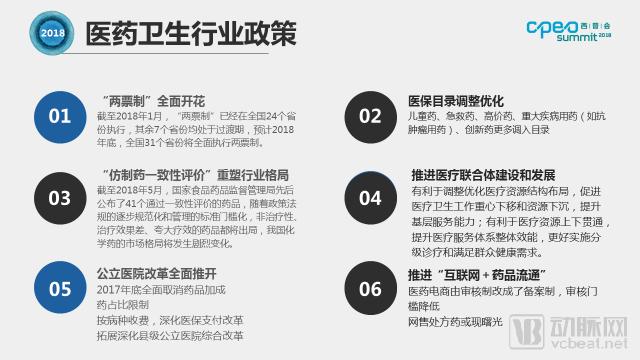
1. The overall market maintains single digit growth
In 2017, the total size of the entire Chinese pharmaceutical market (excluding retail medicinal materials) reached 1,580 billion yuan, an increase of 6.0% over 2016. The five-year compound growth rate was 7.5%, and urban grassroots and retail pharmacies grew slightly faster than large hospitals. It is estimated that in 2018, the size of China's pharmaceutical market will reach 1,712 billion yuan, an increase of 8.3% over 2017, and the growth rate will rebound.
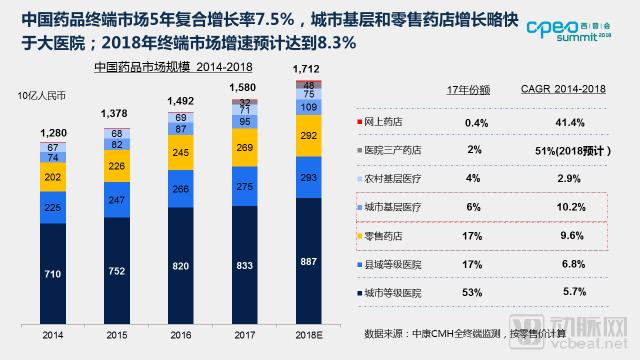
Due to the full implementation of the zero markup rate of drugs and the impact of medical insurance price negotiations, drug prices are facing downward pressure. The growth momentum of the drug market in 17 years mainly comes from the growth of sales and new products.
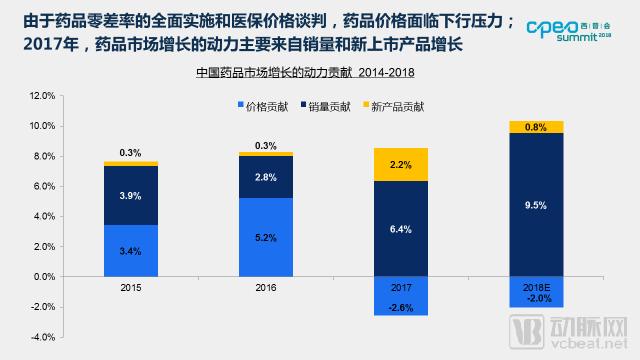
2. Grade hospitals are growing at a slow pace and are expected to pick up in the coming year.
Since 2014, the provinces have started to implement the drug zero rate policy in public hospitals. By September 2017, the public hospitals in all provinces across the country have implemented zero-rate rates, resulting in a 17-year growth rate for city-level hospitals and county-level hospitals. 1.5% and 3.4%. In addition, the proportion of medicines, the charge for diseases, the deepening of medical insurance payment reform, the restriction on the growth rate of medical expenses, and the deepening of the comprehensive reform of county-level public hospitals have all affected the scale growth of grade hospitals. However, under the stimulation of the continuous growth of residents' medical and health needs, the expansion of medical insurance coverage, and the expansion of medical insurance catalogues, it is predicted that the growth rate of urban grade hospitals in 2018 will reach 6.5%, and the county level can reach 6.7%. The rebound.
Affected by policies such as the list of auxiliary drugs, the proportion of controlled drugs, and the growth rate of medical expenses, the major varieties of grade hospitals such as large infusions, auxiliary drugs, and traditional Chinese medicine injections all declined.
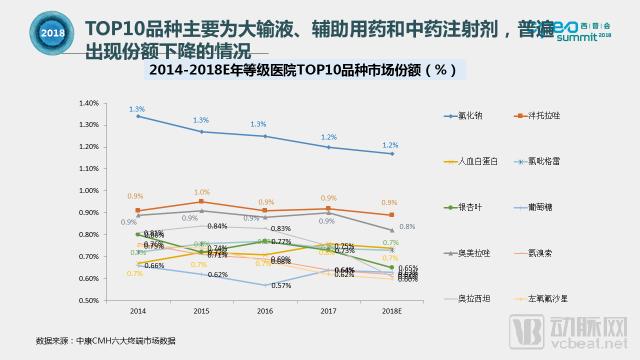
Among the major proprietary Chinese medicine injections, heart disease medications, antineoplastics, and cough and cold medications (mainly anti-inflammatory Chinese medicine injections) all experienced negative growth in 2017, with cough and cold medications falling by nearly 10%. The decline in cough and cold medications is expected to increase further in 2018.
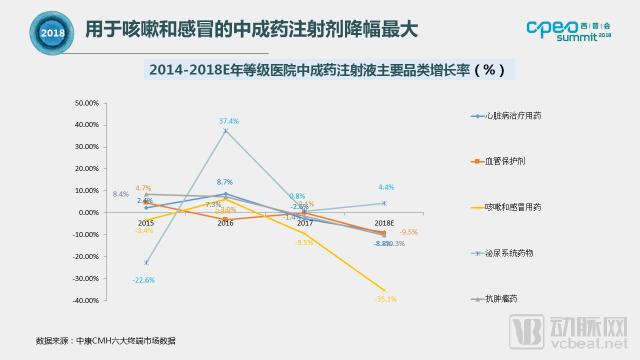
3. The scale of drug use in primary medical institutions is growing rapidly
In 2017, the market size of urban primary hospitals reached 95.1 billion yuan, an increase of 8.9% year-on-year, with a compound growth rate of 16.0%. It is expected to grow at a rate of 14.1% in 2018, and the drug scale will reach 1,085. 100 million yuan, compound growth of 10.2%. In 2017, the market for rural primary hospitals reached 71.2 billion yuan, a year-on-year increase of 3.8%, with a compound growth rate of 7.2%. It is expected that the scale of 18 years will reach 75 billion yuan, an increase of 5.4%.
The growth of primary medical institutions is mainly due to the initial success of the grading diagnosis and treatment measures, and the provinces have gradually liberalized restrictions on primary drug use.
4. Transfer of chronic disease medication to grassroots and retail channels
In 2015-2017, the share of chronic disease medications in grade hospitals has gradually declined, and the size and share of primary care institutions and retail pharmacies have continued to rise. Among them, the growth rate of chronic drug use in retail pharmacies has exceeded 10%.
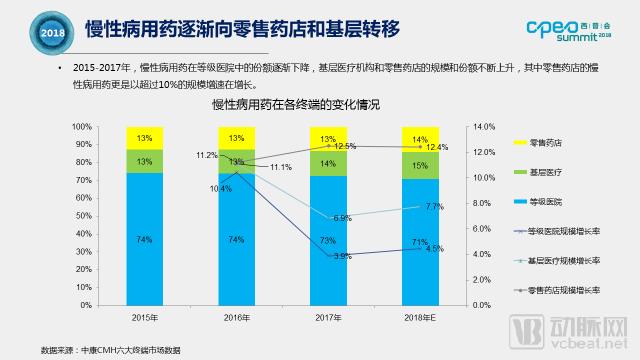
Prescription outflows are a hot topic of recent discussion. Taking the “Zhangzhou Model†as an example, a prescription information sharing platform for hospitals and pharmacies is established, and patients can choose to go to the pharmacy outside the hospital to take medicine. Since the launch of the prescription information sharing platform, the chronic drug use in the retail pharmacies in Zhangzhou City has steadily increased over the past 16 years; since the number of pharmacies expanded in November 17th, the proportion of chronic diseases has reached the highest point in nearly two years; July 18 The trial of the special chronic disease prescription for the medical insurance clinic will be settled directly at the shared pharmacy. There is reason to believe that the proportion will be further improved. Establishing a prescription information sharing platform for hospitals and pharmacies is an effective way to promote prescription outflows.
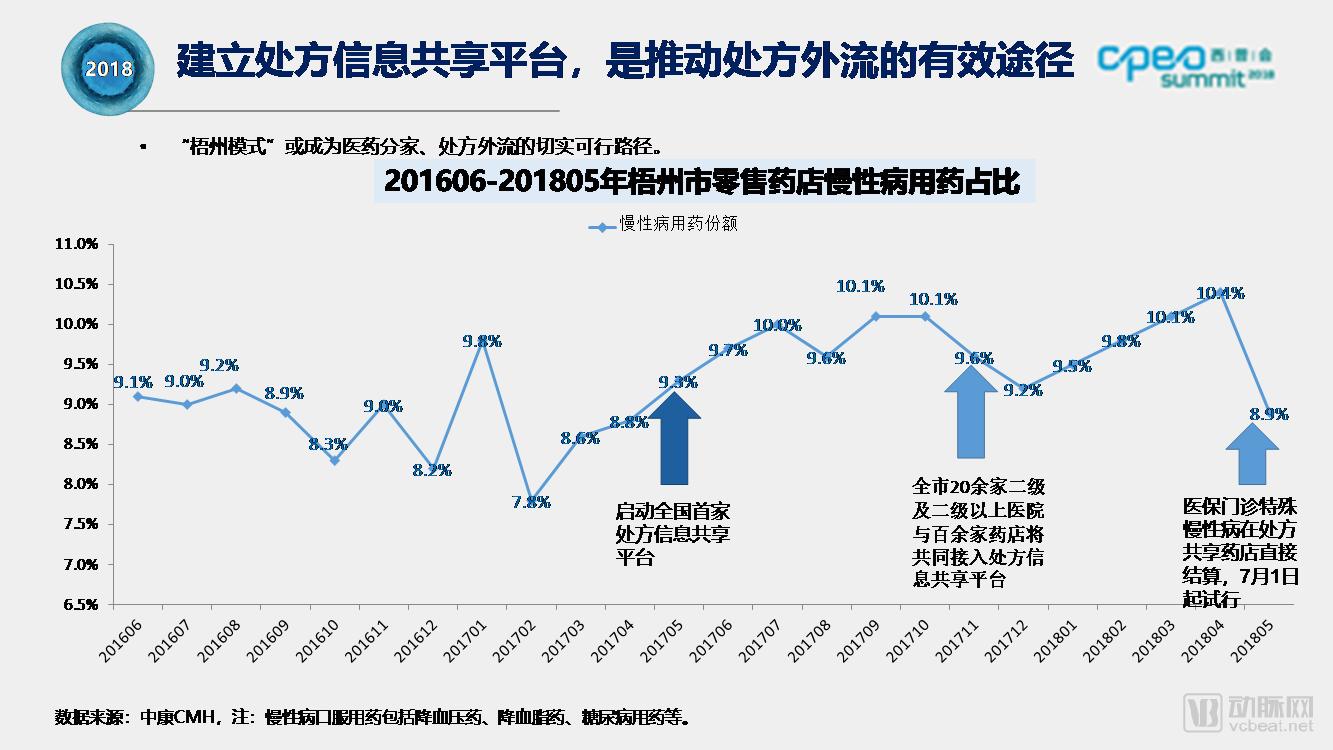
5, anti-tumor drugs have good growth prospects
The share of anti-tumor drugs continues to grow, especially in the 18-year period of key anti-tumor drugs listed in the medical insurance catalogue. Although the relevant drugs will be under pressure to reduce prices after being listed in the medical insurance catalogue, the patient's needs and the policy of reimbursement for medical insurance will further expand the use of related drugs, and the use will further increase. Taking new anti-tumor drugs such as protein kinase inhibitors and monoclonal antibodies as examples, the average growth rate of grade hospitals 2014-2018E is between 17-18%.
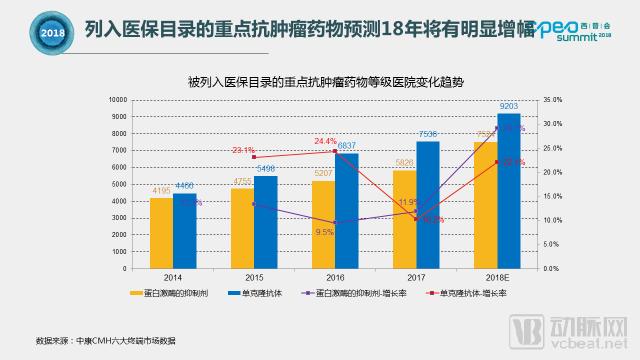
Due to factors such as medical insurance control fees, bidding procurement limit price, and long bidding process, some new special medicines are selected first in retail pharmacies, and high-priced drugs such as anti-tumor drugs that have been listed have also begun to shift to retail pharmacies. The average growth rate of retail pharmacies in 2014-2018E is as high as 40%-42%. The size of retail pharmacy protein kinase inhibitors in 2017 has reached 25.8% of the grade hospitals, and is expected to exceed 30% in 18 years. Retail pharmacies, especially emerging DTP pharmacies, will be an important channel for high-priced drugs such as new drugs and new anti-tumor drugs.
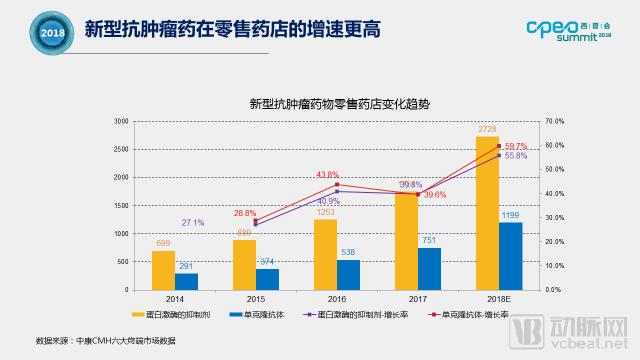
6. The consistency test continues, and the generic drug is positive.
As of May 18, there have been 21 varieties, confirming that at least one generic drug has passed the consistency evaluation, and 45 (standard) generic drugs have passed, or deemed to pass the consistency evaluation. The size of the relevant generic name is expected to increase significantly in 18 years. As more and more local companies have passed the consistency evaluation, they will exert further downward pressure on the share and price of the generic original drug. Taking clopidogrel as an example, it is expected that the share of original research products will decline in 2018, and the share of generic drugs that have passed the consistency evaluation will be further expanded, while the share of products that have not passed the consistency evaluation will only increase slightly. In terms of price, both the original drug and the generic drug prices have fallen, and the generic drugs have dropped considerably. The replacement of imported original drugs by conformity evaluation of drugs is a long-term trend.
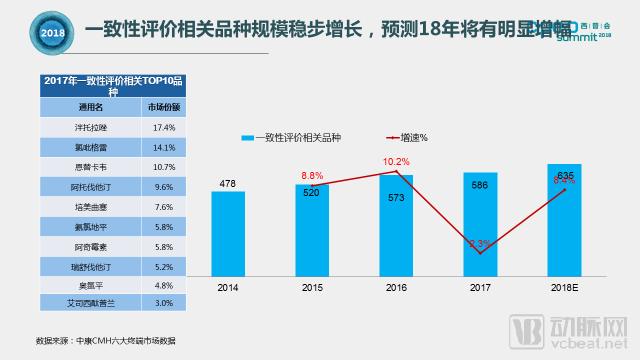
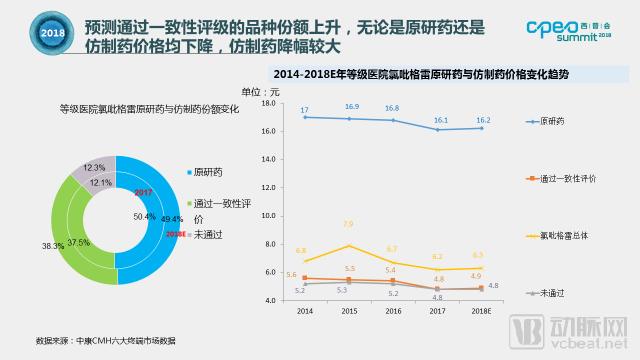
Cosmetics are compound mixtures made from various raw materials after reasonable blending and processing. There are many types of cosmetics raw materials with different properties. According to the raw material properties and uses of cosmetics, it can be roughly divided into two categories: base raw materials and auxiliary raw materials. The former is a main raw material of cosmetics, which occupies a large proportion in cosmetic formulations, and is the main functional substance in cosmetics. The latter is responsible for shaping, stabilizing or imparting color, fragrance and other characteristics to cosmetics. These substances are not used in large amounts in cosmetic formulations, but are extremely important. Cosmetics are chemical mixtures made of natural, synthetic or extracted substances with different functions as raw materials and processed through production processes such as heating, stirring and emulsification.
Collagen peptide, Arbutin, Coenzyme Q10, GSH, Cosmetic Raw Materials, lipoic acid
Xi'an Gawen Biotechnology Co., Ltd , https://www.ahualyn-bios.com